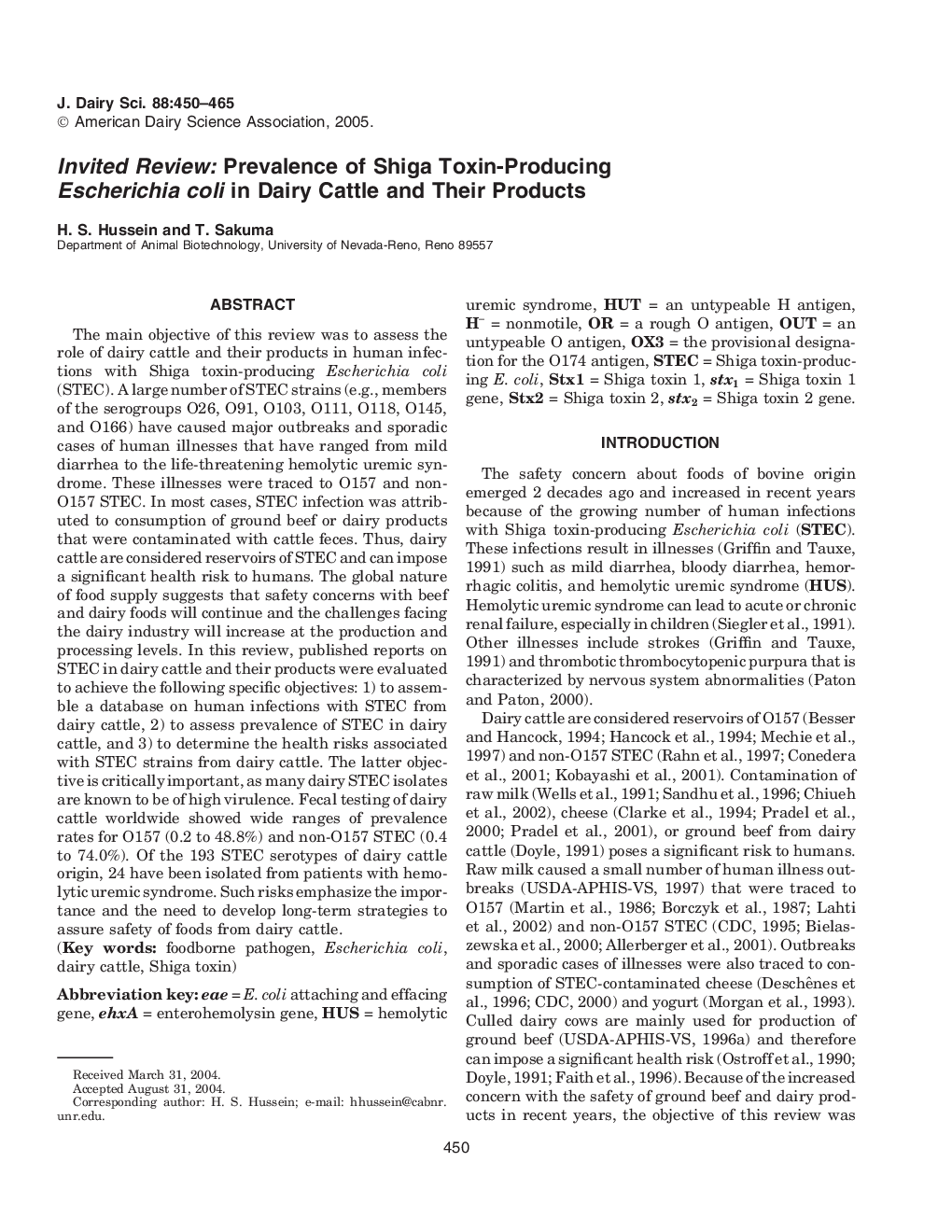| کد مقاله | کد نشریه | سال انتشار | مقاله انگلیسی | نسخه تمام متن |
|---|---|---|---|---|
| 8981163 | 1108143 | 2005 | 16 صفحه PDF | دانلود رایگان |
عنوان انگلیسی مقاله ISI
Invited Review: Prevalence of Shiga Toxin-Producing Escherichia coli in Dairy Cattle and Their Products
دانلود مقاله + سفارش ترجمه
دانلود مقاله ISI انگلیسی
رایگان برای ایرانیان
کلمات کلیدی
موضوعات مرتبط
علوم زیستی و بیوفناوری
علوم کشاورزی و بیولوژیک
علوم دامی و جانورشناسی
پیش نمایش صفحه اول مقاله

چکیده انگلیسی
The main objective of this review was to assess the role of dairy cattle and their products in human infections with Shiga toxin-producing Escherichia coli (STEC). A large number of STEC strains (e.g., members of the serogroups O26, O91, O103, O111, O118, O145, and O166) have caused major outbreaks and sporadic cases of human illnesses that have ranged from mild diarrhea to the life-threatening hemolytic uremic syndrome. These illnesses were traced to O157 and non-O157 STEC. In most cases, STEC infection was attributed to consumption of ground beef or dairy products that were contaminated with cattle feces. Thus, dairy cattle are considered reservoirs of STEC and can impose a significant health risk to humans. The global nature of food supply suggests that safety concerns with beef and dairy foods will continue and the challenges facing the dairy industry will increase at the production and processing levels. In this review, published reports on STEC in dairy cattle and their products were evaluated to achieve the following specific objectives: 1) to assemble a database on human infections with STEC from dairy cattle, 2) to assess prevalence of STEC in dairy cattle, and 3) to determine the health risks associated with STEC strains from dairy cattle. The latter objective is critically important, as many dairy STEC isolates are known to be of high virulence. Fecal testing of dairy cattle worldwide showed wide ranges of prevalence rates for O157 (0.2 to 48.8%) and non-O157 STEC (0.4 to 74.0%). Of the 193 STEC serotypes of dairy cattle origin, 24 have been isolated from patients with hemolytic uremic syndrome. Such risks emphasize the importance and the need to develop long-term strategies to assure safety of foods from dairy cattle.
ناشر
Database: Elsevier - ScienceDirect (ساینس دایرکت)
Journal: Journal of Dairy Science - Volume 88, Issue 2, February 2005, Pages 450-465
Journal: Journal of Dairy Science - Volume 88, Issue 2, February 2005, Pages 450-465
نویسندگان
H.S. Hussein, T. Sakuma,